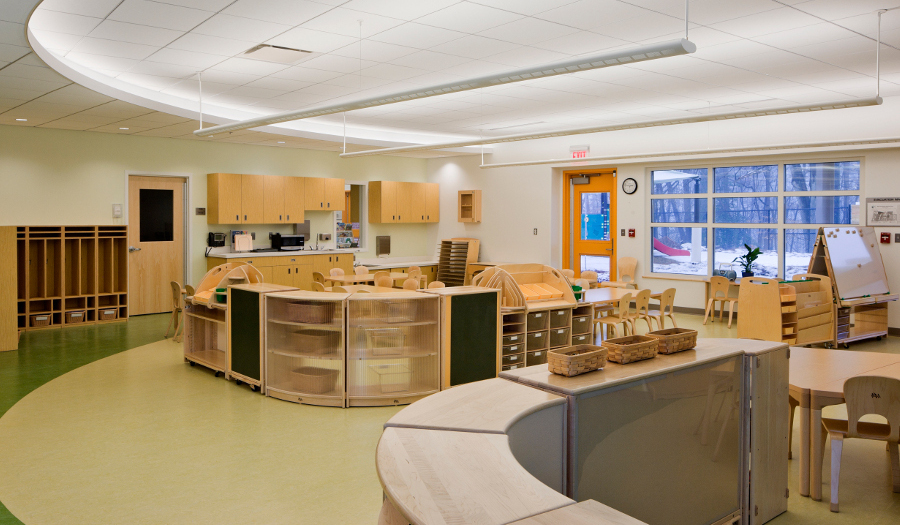Those involved in sustainability and combating climate change often cite a desire to leave a better world for their children as part of their motivation. Many may forget that there is plenty we can do for the kids right now to keep them healthy and get them started early on the path to living green. We recently released our
Child Care Center module, which is loaded with everything you need to make sure a child care facility in your building is designed and operated sustainably, with the kids in mind. You can tour the different areas of a child care center, learning strategies and tips for making the spaces kid-friendly and kid-healthy.
There are many building aspects we take for granted as adults that affect children differently. For example, windows at a height acceptable for an adult might be too high for a child to see. Lighting fixtures should promote indirect lighting; the children will be looking up at the adults in the classroom and shouldn’t be looking into direct light! A lot of these seem like no brainers, but you would be surprised at how these little considerations come together to have a big impact on child care centers. Design from the child’s perspective.
Material selection is especially important for children’s facilities. It is no secret that kids spend a lot of time on the floor (and occasionally licking it!). Non-toxic flooring and furniture with
VOCs well below the legal limit are important, as are any cleaning products used on the toys, furniture, and flooring. All this ensures that children are protected from anything that could harm their growth or intellectual development at this early stage of life.
You might be wondering where this all comes from. We’ve got you covered on that too. GSA has a comprehensive
Child Care Center Design Guide, full of information and requirements for planning in GSA controlled spaces (but applicable to everyone). We’ve also curated a list of credits in major green building rating systems that relate to child care centers.
All of these efforts offer a golden opportunity to involve young children in sustainability conversations. If they grow up turning out the lights, using less water, and understanding their place in the environment, future generations will be well suited to protect and improve the planet when it is their turn.
